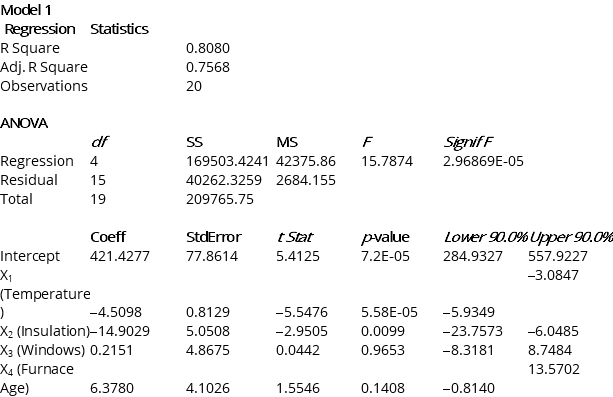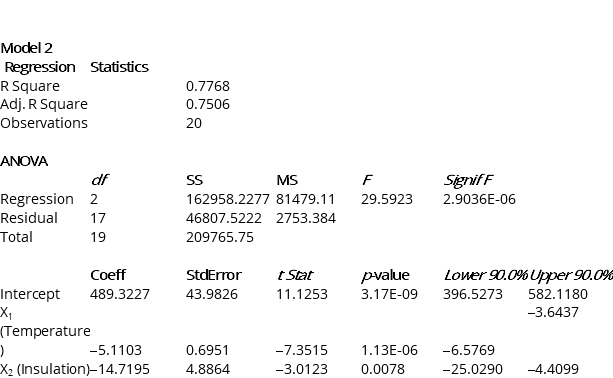Instruction 13.6
One of the most common questions of prospective house buyers pertains to the average cost of heating in dollars (Y) . To provide its customers with information on that matter, a large real estate firm used the following four variables to predict heating costs: the daily minimum outside temperature in degrees of Celsius (X1) , the amount of insulation in cm (X2) , the number of windows in the house (X3) and the age of the furnace in years (X4) . Given below are the Microsoft Excel outputs of two regression models.


-Referring to Instruction 13.6,the estimated value of the partial regression parameter β1 in Model 1 means that
Definitions:
Regulatory Requirements
Legal obligations or standards that organizations must comply with, set by governmental or regulatory bodies.
Sustainability
the ability to maintain healthy environmental, social, and economic systems in balance, indefinitely, on a global and local scale.
Stakeholder Assessment
The evaluation of how the interests and influence of individuals, groups, or organizations that can affect or are affected by an organization's activities.
Natural Environment
The physical, chemical, and biological factors and processes that occur naturally, which are not significantly influenced by human activity.
Q8: Referring to Instruction 10-5,the test to perform
Q42: Referring to Instruction 13.37 Model 1,what are
Q86: The slope (b<sub>1</sub>)represents<br>A) the estimated average change
Q99: Referring to Instruction 13.39,what is the correct
Q101: Referring to Instruction 11-9,the degrees of freedom
Q120: Referring to Instruction 11-10,what degrees of freedom
Q127: Referring to Instruction 11-4,the among-group variation or
Q143: Referring to Instruction 13.13,the value of the
Q186: Referring to Instruction 14-4,the number of arrivals
Q250: Referring to Instruction 13.22,there is sufficient evidence